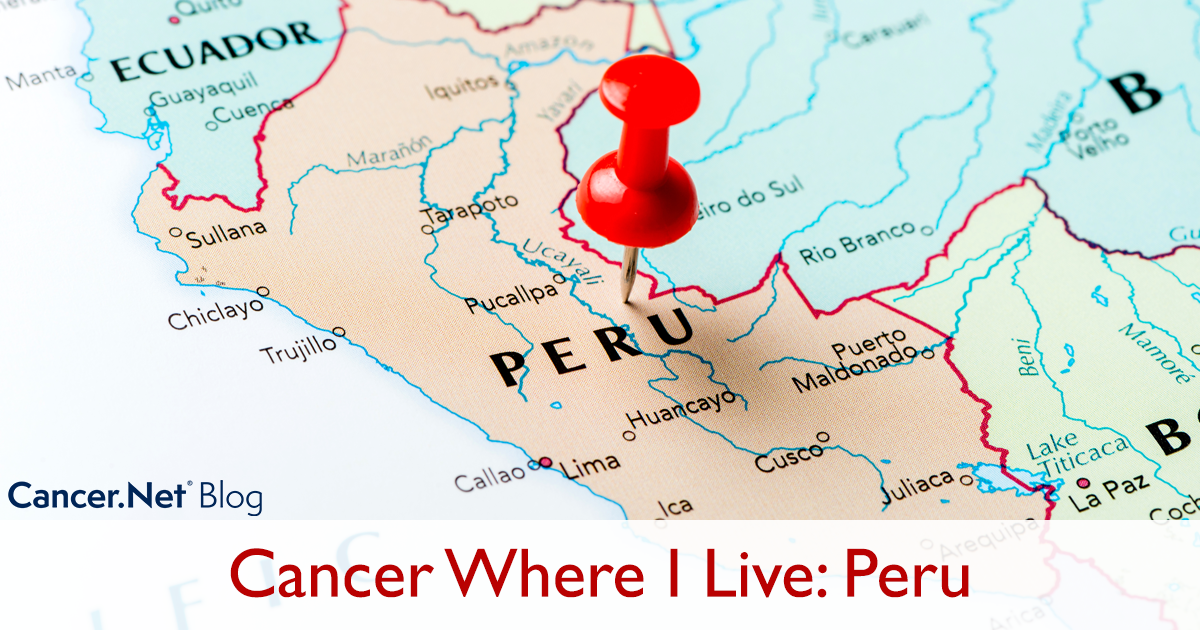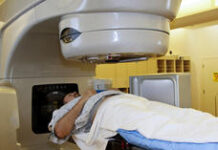
Cancer in My Community is a Cancer.Net Blog series that shows the global impact of cancer and how people work to care for those with cancer in their region. Livia Lucila Martínez Ocola, MBBS, MD, is a medical oncologist at the Telemedicine Center of EsSalud in Arequipa, Peru, and at the Oncology Group of Emmel Clinic. Dr. Martínez Ocola is also a professor at the Faculty of Medicine of the National University of San Agustín. You can follow Dr. Martínez Ocola on X, formerly known as Twitter.
Why I care for people with cancer
I grew up influenced by my father’s altruistic spirit and my mother’s dedication to service. I ultimately decided to pursue a career in medicine because of the values around service and charity I was taught by my family and my church.
My mother was a nurse who worked for years administering chemotherapy, writing books, and teaching about caring for people with cancer as a university professor. In February 2017, she was hospitalized with a cancer diagnosis and turned from caregiver to patient. That was when I decided to dedicate my career to caring for people with cancer.
I experienced firsthand the shock of a cancer diagnosis. I experienced the fear, the doubts, the need for support, the research for the best treatment options, and, regardless of efforts by the health care team, the bad news that my mother had passed. Even though my mother is no longer physically with me, we were fortunate that she received quality care. Especially in the final days of her life, I saw her say goodbye calmly and with a smile, surrounded by the people she loved.
I know that not everyone facing a cancer diagnosis has the same opportunities that my family had. That’s why I chose the challenging path of cancer care, with a focus on palliative care. I want everyone to have access to timely, quality, and equitable services.
What cancer is like in Peru
Peru has a population of 32 million people. The Peruvian population has doubled in the last half-century, and the country has seen a progressive increase in life expectancy to 74.6 years, according to El Instituto Nacional de Estadística e Informática. With the growth of the population and other socioeconomic factors involved, our population went from living in mostly rural areas, with 52.6% of people living in these areas in 1961, to living in mostly urban areas, with more than 75% of people living in urban areas since 2015.
In 2020, there were 69,849 new cancer cases in Peru and 34,976 cancer deaths, according to the World Health Organization. The most commonly diagnosed cancers in Peru are prostate cancer, breast cancer, stomach cancer, colorectal cancer, and cervical cancer. However, cancer diagnoses in Peru vary between each age group. For example, in people over age 50, stomach cancer and lung cancer are the most commonly diagnosed cancers in both men and women. Meanwhile, prostate cancer and cervical cancer accounted for 21% and 10.1% of cancer deaths in men and women in this age group, respectively.
Each region of Peru has unique factors that are important to consider for cancer care, prevention, and research in those regions. For example, according to La Sociedad Peruana de Oncología Medica, the main causes of cancer death in men ages 15 to 49 in Peru are stomach cancer and brain cancer, while in women ages 15 to 49, they are cervical cancer and breast cancer. However, there are regional differences in cancer death rates. So, for instance, the death rate from cervical cancer on the coast is substantially lower than the death rate in the mountains and jungle. This is due to people on the coast generally having more financial resources and greater access to screening and specialized care than people in the mountains and jungle. Yet the coast has also had the highest death rate from breast cancer over the past 15 years compared with the mountains and jungle. This is because the coast has the largest population centers in Peru and it is where most cancer data collection occurs.
Differences in cancer outcomes between the various geographic regions in Peru could be a reflection of race and genetics, lack of access to health care services, disparities in access to cancer care and information, and modifiable risk factors, such as obesity. There is also a fight in Peru to stop cancer from being seen as “taboo.” Many people in Peru, especially those who live in the mountains and jungle, misunderstand or are afraid of cancer. So, they often pursue alternative treatments rather than traditional cancer care.
How the Peruvian government is working to improve access to cancer care
To combat the problems mentioned above and achieve high-quality cancer care, in 2012, the National Plan for Comprehensive Cancer Care and Improvement of Access to Services was created in Peru, called “Plan Esperanza.” Its main objectives are to improve access to services for the prevention, early detection, diagnosis, staging, and treatment of cancer at a national level; address the social and cultural diversity of the country; and improve economic access to health services through comprehensive health insurance.
Despite progress since the implementation of the plan, such as a modest increase in the number of people receiving cancer care and increased financing for prevention and screening activities, there are still many things to work on. Thus, in 2020, the plan was updated to include efforts toward palliative care services, cancer care for children and teens, and improving access to cancer services throughout Peru, not just in the urban centers.
Working to prevent cancer in Peru
Although prevention measures cannot guarantee the prevention of cancer, they are definitely the main tools we have against cancer, especially in a country with low economic resources and variable access to treatment. By changing certain habits and behaviors to maintain a healthy lifestyle, such as following a balanced diet, getting regular physical activity, and avoiding tobacco use and excessive alcohol consumption, people in Peru can reduce the risk of developing cancer. Additionally, by receiving regular cancer screening, such as mammograms, colonoscopies, and Pap tests, this can make a difference in cancer outcomes, as early cancer detection can increase treatment options and improve results. It is important that people learn about their personal risk of developing cancer and work with their health care providers to create a personalized prevention plan tailored to their individual needs.
If a cancer diagnosis is received, it is important for people to understand their diagnosis, treatment options, possible side effects, and whether they should make any changes in their lifestyle. They should also make sure they understand how the health system in charge of their case works, as well as ask about access to health resources, counseling, and support groups.
Where people with cancer in Peru can find local resources and support
There are many valuable online resources for people with cancer in Peru, such as those shared by the Peruvian Society of Medical Oncology, the Peruvian Society of Cancerology, the Peruvian Society of Palliative Care, the Peruvian Society of Mastology, and the Radiotherapy Society of Peru. There are also educational materials available through the social networks of the National Institute of Neoplastic Diseases and EsSalud Digital.
Additionally, there are many nonprofit organizations that support people with cancer, families, and caregivers in Peru, such as:
Finally, there are virtual support tools available for people with cancer in Peru, such as ONCOPeds, which is an application to improve the early diagnosis of childhood cancer, and PEOPL, which is a monitoring and virtual agenda for people with cancer.
The author has no relevant relationships to disclose.







